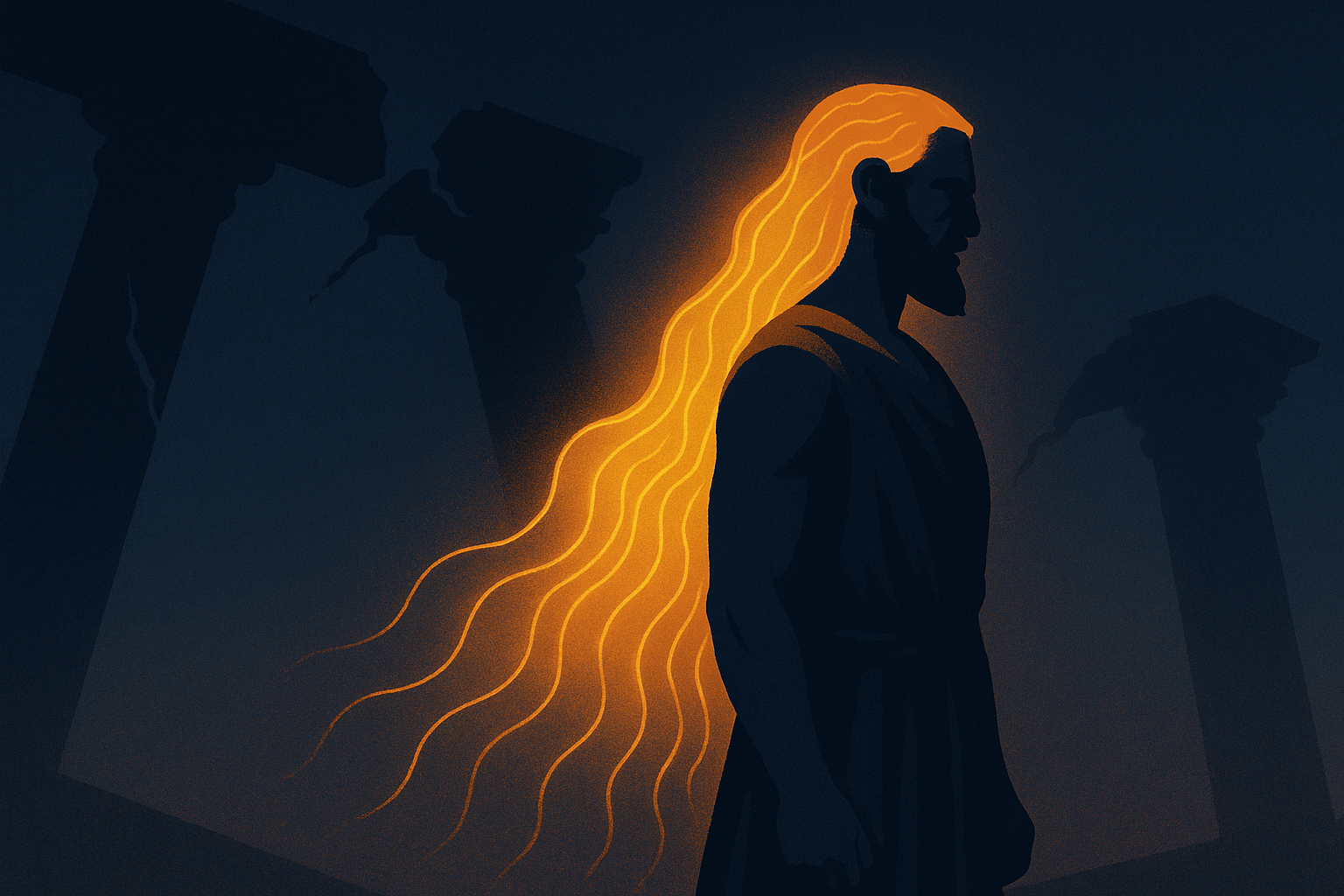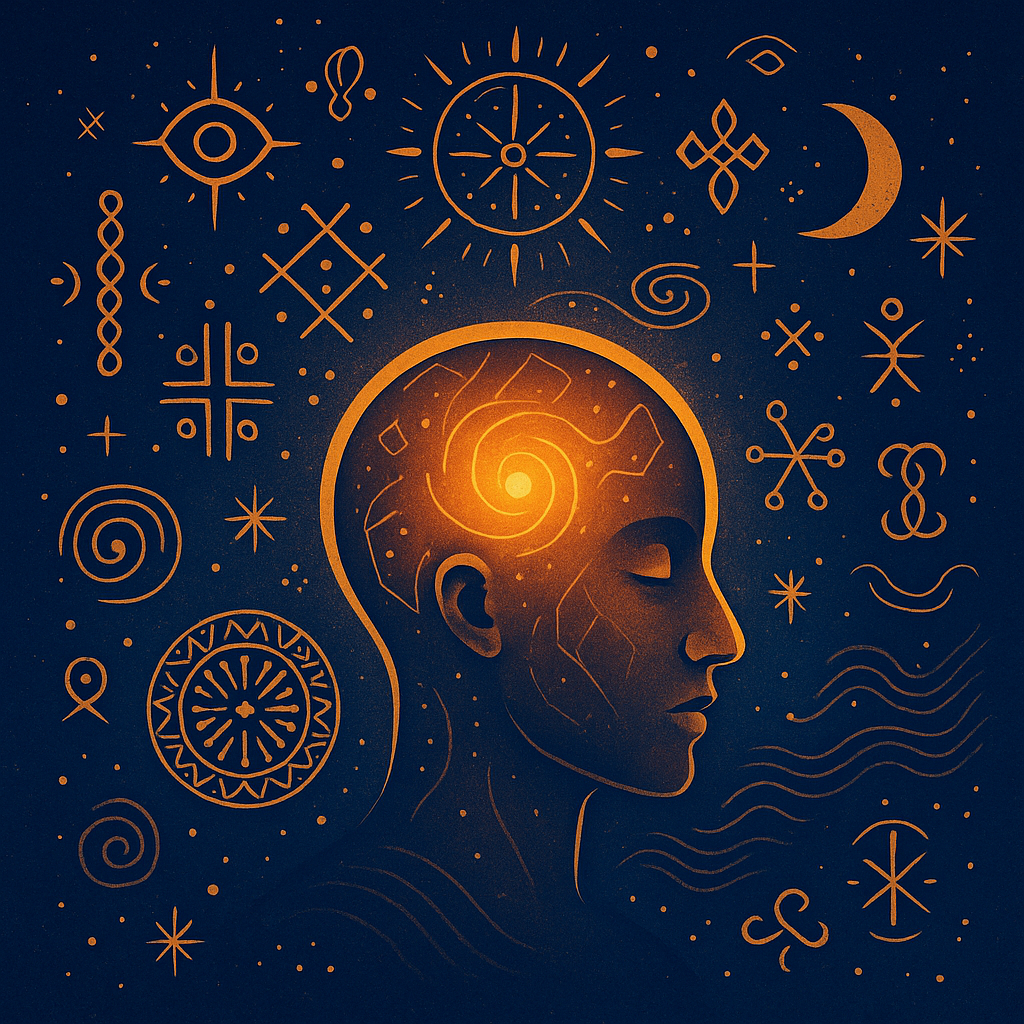Delilah: The Mirror of Desire and the Shadow of Strength
1. The Biblical Narrative (Judges 16)
Delilah enters Samson’s story not as a coincidence but as a turning point.
The Philistines, threatened by Samson’s might, see in her a doorway to his downfall.
They bribe her to uncover the secret of his strength — and she agrees.
“See if you can lure him into showing you the secret of his great strength.”
— Judges 16:5
She asks, he deceives. Three times, Samson mocks her with false answers.
On the fourth, exhausted by her persistence, he reveals the truth — his strength lies in his uncut hair, the visible symbol of his covenant with God.
While he sleeps, she has it cut. His power departs; he is captured and blinded.
Through Delilah’s act, the mythic hero meets the mirror of his mortality.
2. Historical and Cultural Context
The name Delilah (Dĕlîlāh) in Hebrew means “delicate,” “to weaken,” or “to impoverish.”
She is not defined by tribe or nationality — her identity is deliberately ambiguous.
This anonymity makes her universal: she is not just a woman, but a force.
In ancient literature, such figures often symbolize entire worlds — temptation, materialism, or the seductive pull of the unspiritual.
Delilah thus stands as the embodiment of the worldly principle that tests divine intention.
She does not act from demonic malice, but from the human drive for advantage and survival.
Her betrayal is pragmatic — a trade of silver for secrets — and in that transaction lies the reflection of our own world:
how easily the sacred is exchanged for comfort or control.
3. Psychological and Archetypal Interpretation
Delilah as the Shadow
In Jungian psychology, Delilah represents the shadow anima — the inner force that draws the conscious ego toward its own hidden desires and vulnerabilities.
Samson’s fall is not due to Delilah’s cunning but to his lack of self-awareness.
He mistakes intimacy for safety, affection for truth.
Her persistence exposes his inner fragmentation — the part of him that yearns to be known, even at the cost of strength.
In this light, Delilah is not evil — she is the summons to self-knowledge.
She asks the question every soul must face: “Where does your strength truly lie?”
Delilah as the Archetype of Desire
Delilah personifies desire’s most seductive illusion — that surrender of the self brings union.
Yet what she reveals is that desire without discernment dissolves the very source it seeks to possess.
Her cutting of Samson’s hair symbolizes this loss of sacred focus — when attention turns outward, the inner covenant collapses.
4. Feminine Power and Misinterpretation
For centuries, Delilah has been cast as the treacherous woman — the betrayer of heroes.
But a deeper reading uncovers her as the necessary mirror of imbalance.
She does not merely seduce; she reveals.
Through her, Samson’s power — rooted in external might — confronts its dependency on inner faith.
She brings him to his breaking point, not as punishment but as initiation.
Without Delilah, Samson remains strong but unconscious.
Through her betrayal, he becomes aware — a man reborn through loss.
Thus, Delilah represents the feminine principle of reflection — the energy that unmasks false strength and forces transformation.
5. Metaphysical Reading
Delilah’s scissors are not just tools of betrayal — they are instruments of spiritual severance.
By cutting Samson’s hair, she severs the energetic bridge between the divine and the ego.
But the divine current, though interrupted, is never extinguished.
Through the fall, spirit reconfigures itself in new form.
In metaphysical symbolism:
- Samson is solar energy — action, assertion, creation.
- Delilah is lunar energy — reflection, surrender, dissolution.
Their meeting forms a cosmic polarity.
She is the moon that eclipses the sun, so the hero may rediscover light not through pride but through humility.
6. Contemporary Reflection
In today’s world, “Delilah” appears in subtler forms — as distraction, seduction, or self-betrayal.
She is the inner whisper that asks us to trade presence for pleasure, purpose for comfort.
She is the algorithmic lullaby that cuts our hair strand by strand — our time, attention, and sacred energy.
Yet she is also the teacher of awareness.
Each time we face her — each time we choose to protect the sacred within rather than yield to temptation — we reclaim the power of covenant.
Delilah, then, becomes not the destroyer of strength, but the revealer of what must be guarded.
7. In Essence
Delilah is the threshold of self-knowledge — the point where divine purpose meets human vulnerability.
She teaches that what is sacred must be shielded, not out of fear, but out of reverence.
Through her, Samson — and all of us — learn that power without consciousness is fragile, and that love without discernment is perilous.
“Delilah is not the villain of the story but the unveiling of the lesson.
She reminds us that strength must be tempered by wisdom, and devotion must include discernment.”
— Ekelola Reflections





